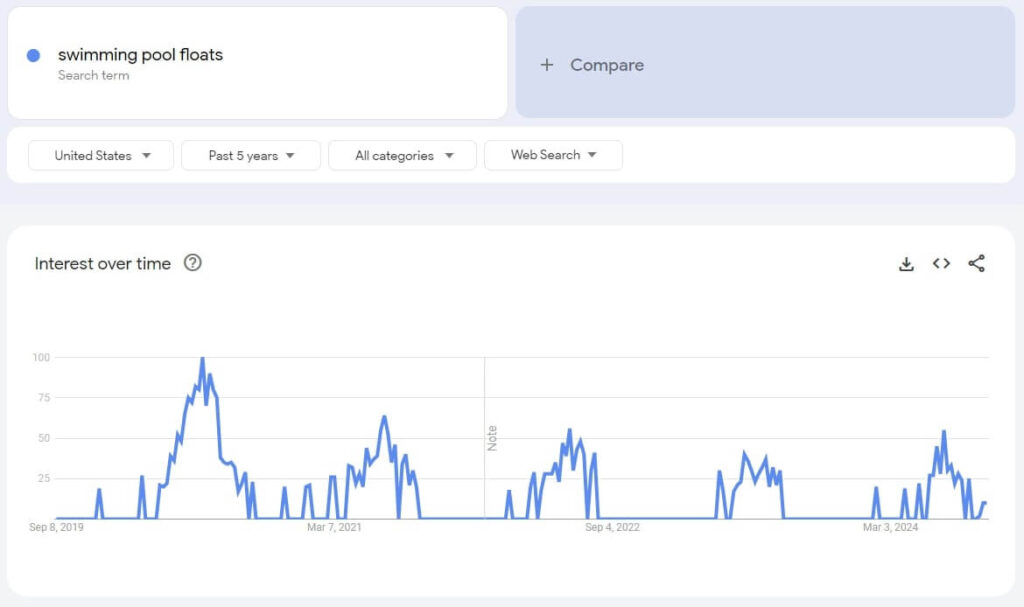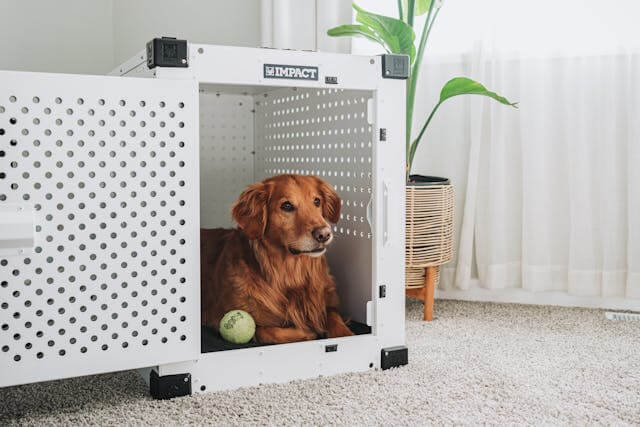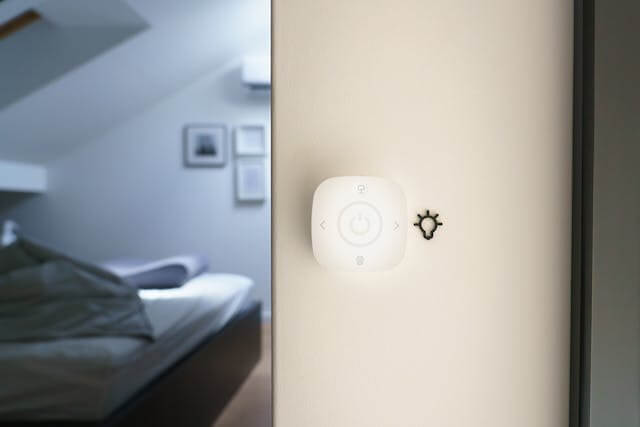Are you struggling to find profitable products to sell online? Targeting high demand, low competition products can boost your eCommerce success.
These products offer higher profit margins, easier market entry, and lower advertising costs. Imagine selling items that people really want but face little competition—all while saving money on marketing.
This article will guide you through the process of identifying and selecting these lucrative products and provide detailed examples.
What Is a High Demand Low Competition Product?

A high demand low competition product is one that many people want to buy but few sellers offer. In eCommerce, this balance is key to maximizing profitability.
High demand means lots of customers are searching for and purchasing the product.
Indicators of High Demand
- High search volume: Many people look for the product online.
- Strong sales data: Consistent sales figures on platforms like Amazon.
Low competition means fewer sellers are competing to sell the product.
Indicators of Low Competition
- Few listings: Limited availability of the product from different sellers.
- Low number of reviews: Fewer reviews can indicate fewer sellers.
With this in mind, balancing demand and competition helps you find profitable opportunities.
- High demand ensures a steady stream of buyers.
- Low competition means less rivalry, giving you a better chance to stand out.
Before we dive into the specifics of identifying high demand, low competition products, let’s take a look at some of the top categories that are currently trending and expected to continue growing in 2024 and beyond:
- Eco-Friendly Products
- Home Office Accessories
- Pet Care Supplies
- Health and Wellness
- Smart Home Devices
- Travel Accessories
We’ll cover specific examples from these categories later in this article.
Tools and Methods for Identifying High Demand Low Competition Products
Google Trends
Google Trends is a powerful tool that can help you find high demand, low competition products. Using it, you can see how often specific keywords are searched for in various regions and during certain periods.
Here’s how you can leverage this tool:
- Go to Google Trends.
- Enter a keyword. For example, type “wireless headphones.”
- Look at the interest over time. This shows the keyword’s popularity.
You can use the Interest Over Time graph to see if a product is gaining or losing popularity. A steady or rising trend indicates potential high demand. A declining trend might suggest a decreasing interest.
Google Trends also shows seasonal variations. For example, searches for “swimming pool floats” might spike in summer. Identifying these seasonal trends can help you plan your inventory better.

You can compare up to five terms at once. This helps you see which products are trending more. For example, compare “wireless headphones” and “Bluetooth speakers” to see which has higher demand.
| Feature | Usage |
| Interest Over Time | Check overall keyword popularity |
| Regional Interest | See where searches are popular |
| Related Queries | Discover related high demand products |
Product Research Tools
Finding high-demand, low-competition products on Amazon can be easier with the right tools. Tools like Jungle Scout, Helium 10, and AMZScout offer various features to help you identify them.
Jungle Scout
Jungle Scout offers a comprehensive platform. Their Product Database lets you filter by category, price, and demand to find profitable items. They also have an Opportunity Finder to help you spot low-competition niches.
Helium 10
Helium 10 provides several research tools. Xray, part of their Chrome extension, analyzes over 450 million products. It shows metrics like estimated monthly sales and Best Sellers Rank (BSR). This data helps you evaluate product viability quickly.
AMZScout
AMZScout gives in-depth insights into sales trends and competition. Their platform features tools for keyword research and competitor analysis. This helps you understand market needs and find gaps where you can succeed.
Benefits of These Tools
- Identify Niche Opportunities: By showing high demand and low competition metrics, these tools help you spot lucrative niches.
- Competition Analysis: They provide data on competitors’ pricing strategies, sales volumes, and customer reviews.
- Estimate Demand: Sales estimators show how many units a product sells each month, helping you gauge market demand.
Social Media Insights

You can leverage social media platforms like Instagram, Facebook, Pinterest, and TikTok to discover trending products and niche markets.
Use hashtags to track popular topics and emerging trends. For example, search for hashtags like #trendingnow or #musthave to see what products are catching people’s attention.
Engage with influencer content. Influencers often highlight new products and can give insights into what might become popular. Follow influencers in your niche to stay updated.
Utilize social listening tools such as Hootsuite or Sprout Social to monitor conversations and trends. These tools help you analyze mentions, hashtags, and keywords across different platforms to identify potential high-demand products.
Instagram is great for visuals. Explore the Explore page and popular accounts to see what products are gaining traction. Look at the comments and likes to gauge interest.
Facebook Groups provide a sense of community and can be full of valuable insights. Join groups related to your niche to see what members are talking about and what products they recommend.
Pinterest is a haven for discovering trending products. Search for pins related to your niche and look at the number of saves and repins to determine a product’s popularity.
TikTok is a powerful platform for spotting viral products. Use the For You page to see which products are blowing up. Pay attention to product reviews and unboxing videos.
Consider using analytics tools like Google Trends to see the search volume for specific products and BuzzSumo to find content with high engagement related to your niche.
Trade Shows and Industry Events
Attending trade shows and industry events is crucial for discovering high demand, low competition products. These events gather industry professionals, showcasing new trends and innovative products.
Trade shows provide a unique opportunity to see products firsthand. You can evaluate their quality, compare them with competitors, and understand market trends.
Meeting suppliers face-to-face can also help you negotiate better deals and establish lasting relationships.

Tips for Effective Networking
- Prepare in Advance: Research exhibitors and plan your visits.
- Attend Seminars: Gain insights from industry experts and stay updated on trends.
- Network Actively: Engage in conversations, exchange contacts, and follow up.
Walking the trade show floor lets you observe what’s generating buzz. Note which booths attract the most attention and engage in discussions to understand why. Use this intelligence to identify products with high demand but low competition.
To find relevant events, utilize online directories. Websites like Trade Show Buzz list top manufacturing shows while Classic Exhibits covers a variety of industries.
Criteria for Selecting High Demand Low Competition Products
To find high demand, low competition products, follow these key criteria.
1. Market Demand
As mentioned earlier, finding high-demand, low-competition products requires understanding market demand by identifying what people are searching for but isn’t widely available.
You can measure this demand through tools like Google Keyword Planner and Google Trends, which show search volume trends for specific terms, such as rising interest in “non-alcoholic beverages.”
Additionally, monitoring social media platforms like Instagram, Facebook, and TikTok for trends and hashtags can provide valuable insights into product popularity and help you spot emerging market opportunities.
Sales data is also crucial. Amazon Best Sellers lists are a great starting point. Items like the Stanley Quencher, which is popular in the Home & Kitchen category, can give you an idea of what’s selling well.
2. Competition Analysis
To successfully find high demand, low competition products, you need a solid competition analysis. This helps you understand the market and pinpoint opportunities.
Start by analyzing competitor stores. Look at their product listings, prices, customer reviews, and ratings. Pay attention to bestsellers and track how frequently new products are added.
Using tools like Jungle Scout and Zik Analytics can give you insights into your competitors. These tools show sales volumes, pricing trends, and customer feedback.
Look at market saturation. Identify how many sellers are offering similar products. A highly saturated market means more competition and tougher price wars.

Tips for Finding Underserved Niches
- Customer Reviews: Check reviews on competitor products to find common complaints. These can be opportunities for improvement in your product.
- Social Media: Follow forums, groups, and social media pages related to your niche to spot unmet needs.
- Niche Score: Use tools that provide a niche score based on demand and competition. For example, Jungle Scout recommends a niche score of 7 or higher.
- Seasonality: Avoid highly seasonal products unless you’re prepared for fluctuating sales. Set seasonality to low to find more stable products.
3. Profit Margins
Profit margins are crucial for any eCommerce business. They determine how much money you make after covering all costs. Calculating these margins helps you understand if a product is worth selling. Here’s a helpful formula to calculate profit margins:
Profit Margin (%) = [(Selling Price – Cost of Goods Sold)/Selling Price] x 100
Example:
- Selling Price: $50
- COGS: $30
Profit Margin = [(50 – 30)/50] x 100 = 40%
When planning, remember to include product costs, shipping fees, and other expenses. Proper calculation ensures you choose products that offer the best returns.
4. Keyword Search Volume
Understanding keyword search volume helps you gauge product demand and competition.
Tools for Keyword Search Volume
- Google Keyword Planner: This tool is free and accurate. It shows the monthly search volume for your chosen keywords. This can help you identify popular products.
- Ahrefs: Ideal for finding low-competition keywords. It provides search volume data and keyword difficulty scores.
- SEMrush: Offers detailed insights. It includes search volume, keyword trends, and competitive analysis.
Search Volume Ranges
| Search Volume | Demand Level |
| 100 – 1,000 | Low |
| 1,000 – 10,000 | Moderate |
| 10,000+ | High |
Keep in mind, a high search volume might also mean high competition. Aim for keywords with moderate search volume and low competition.
Tips on Keyword Search
- Enter your product idea into Google Keyword Planner.
- Review the search volume and note the trends.
- Cross-check with Ahrefs or SEMrush for competition levels.
Example:
- If you find a keyword with 5,000 searches per month and low competition, it’s a good candidate.
- Add related keywords to your list and check their volumes too.
5. Unique Selling Proposition (USP)

To stand out in a crowded market, you need a Unique Selling Proposition (USP). A USP highlights what makes your product different and better than competitors. It tells customers why they should choose your product.
A strong USP addresses your product’s unique quality, feature, or value. For example, if you offer eco-friendly packaging, make this part of your USP.
Therefore, a strong USP is important because of the following
- Differentiation: Sets your product apart from others.
- Value Communication: Shows the unique benefits to customers.
- Customer Loyalty: Builds trust and loyalty among shoppers.
Elements of an Effective USP
- Clarity: Be clear about what makes your product different.
- Relevance: Ensure it meets your customers’ needs.
- Uniqueness: The feature or quality should be exclusive to your product.
Examples of Strong USPs
- Dollar Shave Club: “A great shave for a few bucks a month. No commitment.” This USP highlights affordability and convenience.
- Toms: “With every product you purchase, Toms will help a person in need.” Emphasizes social impact and charity.
How to Develop Your USP
- Analyze Competitors: Identify what they offer and find gaps.
- Understand Your Audience: Know their needs and preferences.
- Highlight Benefits: Focus on what makes your product special.
A compelling USP improves your marketing and sales efforts by making your product memorable. Communicate your USP across all channels, from your website to your social media.
6. Product Size and Weight
Size and weight are crucial factors when choosing products to sell. These factors impact shipping costs and logistics.
Smaller, lighter products are cheaper to ship and handle. Heavy and bulky items often lead to higher shipping costs.
These costs can eat into your profit margins. For beginners, starting with small and lightweight products is a wise choice.
Here are some examples of products that fit this category:
- Face masks
- Nail polish
- Yoga mats
- Water bottles
These items are easy to store, pack, and ship. This simplicity can save you time and money on logistics.

According to Jungle Scout, small and lightweight products are ideal for new sellers. They recommend products that are less than 18 inches on any side and weigh less than 5 pounds.
Additionally, focusing on these smaller items reduces the risk of damage during shipping. This can lead to fewer returns and higher customer satisfaction.
Large and heavy items, on the other hand, may require special handling, which can complicate your logistics. They might need palletized shipping or freight services, adding more costs and steps to your process.
7. Regulatory Requirements
When choosing high demand low competition products, you need to understand regulatory requirements. Different products have different rules. Safety standards and import restrictions are common examples.
Safety standards protect consumers. For example, children’s toys must follow guidelines set by the CPSC. Testing for toxic chemicals and choking hazards is required.
Import restrictions are also important. Some items can’t be brought into your country without extra steps. Check U.S. Customs and Border Protection for detailed rules on importing goods.
Tips for Ensuring Compliance
- Research: Visit official sites like the FDA and EPA.
- Certification: Look for necessary certifications like CE marking in Europe.
- Documentation: Keep records of compliance tests and approvals.
Examples of Regulated Products
- Electronics: Must meet FCC standards.
- Cosmetics: Should comply with FDA regulations on ingredients.
- Food items: Need safety checks from agencies like USDA.
Ensuring regulatory compliance helps you avoid fines and protect your customers. Always stay updated with the latest rules by checking government websites regularly. This practice will help you maintain a reliable and safe business.
8. Trends and Seasonality
You should keep an eye on market trends to spot rising product categories. Tools like Google Trends can help you analyze search interest over time.
For example, non-alcoholic beverages have seen a significant rise recently, with sales increasing by 598% during the 2023 Cyber holiday shopping weekend.

Use market research tools to check the demand score and competition data. This will help you identify products with growing interest but low competition. For example, yoga mats and fitness items are currently in high demand.
Seasonality is also crucial in eCommerce. Products like winter coats or holiday decorations sell best during specific times of the year.
Use filters in product research tools to set seasonality to “Very Low.” This ensures you are looking for products that sell consistently throughout the year.
Here’s a simple breakdown of how to identify seasonal vs. evergreen products:
| Type | Characteristics | Examples |
| Seasonal | High demand during specific times of the year | Christmas decorations, Halloween costumes |
| Evergreen | Consistent demand year-round | Water bottles, fitness equipment |
Tips for Evaluating Seasonality
- Check Monthly Sales Data: Look at monthly sales data to see if sales fluctuate significantly throughout the year.
- Review Search Trends: Use tools to analyze search trends over the past 12 months.
- Analyze Competitor Inventory: If competitors frequently run out of stock during peak seasons, it’s a good sign of seasonal demand.
Popular High Demand Low Competition Niches for 2024 and Beyond
Eco-Friendly Products
Eco-friendly products are becoming increasingly popular as people seek sustainable and environmentally friendly options.
The following subtopics highlight products that are both in high demand and have low competition: reusable food wraps and biodegradable phone cases.
Reusable Food Wraps
Reusable food wraps are an innovative solution for reducing plastic waste. Made from materials like beeswax, organic cotton, and jojoba oil, these wraps can be used multiple times. They keep food fresh while eliminating the need for single-use plastic wraps.
Key Benefits
- Sustainability: Reduces plastic waste.
- Cost-effective: Saves money over time.
- Versatile: Can wrap fruits, vegetables, and sandwiches.
Consumers increasingly prioritize eco-friendly options, making reusable food wraps a popular product.
In fact, eco-friendly products rank among the top 20 high demand products with low competition. This aligns with market trends that show a shift towards sustainable living.
Biodegradable Phone Cases

Biodegradable phone cases are an excellent choice for eco-conscious consumers. These cases are made from materials like bamboo, cornstarch, and recycled plastics.
Unlike traditional plastic cases, they decompose naturally and don’t harm the environment.
Key Benefits
- Eco-Friendly: Made from sustainable materials.
- Durable: Protects phones while being environmentally safe.
- Stylish: Available in various designs and colors.
The demand for biodegradable phone cases is on the rise as customers opt for products that align with their values.
Home Office Accessories
To create an efficient home office, you need the right accessories. With the rise in remote work, some items stand out for their high demand and low competition: ergonomic laptop stands and noise-cancelling desk dividers.
Ergonomic Laptop Stands
Ergonomic laptop stands are designed to improve posture and reduce strain. They allow you to adjust the height and angle of your laptop screen, keeping it at eye level.
This setup helps prevent neck and back pain. Many stands are foldable and portable, making them ideal for any workspace setup.
The demand for ergonomic laptop stands has surged as more people work from home. Products like the Roost Laptop Stand and Nexstand have become popular.
Their lightweight yet sturdy builds appeal to consumers seeking both comfort and convenience. With adjustable features and ease of use, these stands cater to a growing need for ergonomic office solutions.
Noise-Cancelling Desk Dividers
Noise-cancelling desk dividers are key for creating a focused work environment. They block out background sounds, making it easier to concentrate.
These dividers are made from sound-absorbing materials like foam and fabric, which reduce noise pollution in your home office.
Desk dividers also add a layer of privacy, which is crucial in a shared living space. They come in different sizes and styles to fit various desk setups.
Brands like Vistaprint offer customizable desk dividers to suit individual needs. As remote work continues to rise, the demand for functional and stylish noise-cancelling solutions remains strong.
Pet Care Supplies

Pet care supplies have seen a significant rise in demand, especially smart pet feeders and eco-friendly pet toys. These products combine convenience, health benefits, and sustainability.
Smart Pet Feeders
Smart pet feeders have revolutionized pet care. They allow you to schedule feeding times, control portions, and monitor your pet’s eating habits from your smartphone. This is particularly useful if you have a busy schedule or travel frequently.
Many smart feeders come equipped with cameras, so you can watch your pet eat in real-time. Some even have voice recognition to call your pet when it’s mealtime.
The market for smart pet feeders has grown substantially, driven by an increasing number of tech-savvy pet owners who seek to blend convenience with pet care.
According to Exploding Topics, this category is expected to continue growing through 2024 and beyond.
Eco-Friendly Pet Toys
Eco-friendly pet toys focus on sustainability without compromising on fun. These toys are made from recycled, biodegradable, or natural materials. They help reduce the environmental footprint caused by conventional pet products.
Consumers are becoming more conscious of environmental impacts and prefer safe products for their pets and the planet.
Eco-friendly toys are designed to be durable, ensuring they last longer and reduce waste. This growing trend aligns with the broader consumer shift towards sustainable living.
Exploding Topics reports a significant increase in search interest for eco-friendly pet products, highlighting the growing demand in this niche.
Health and Wellness
Consumer preferences are shifting towards health and wellness products that enhance daily life and well-being. Market trends indicate a growing interest in products like blue light-blocking glasses and portable air purifiers.
Blue Light Blocking Glasses

Blue light blocking glasses help reduce the strain on your eyes caused by long hours of screen use. These glasses are especially popular among people who spend much time on computers, smartphones, and tablets.
With the rise of remote work and digital learning, their demand has surged.
These glasses filter out the blue light that can cause eye fatigue and disrupt sleep patterns.
Studies have shown that excessive blue light exposure can interfere with melatonin production, affecting sleep quality. Many users report reduced headaches and less eye strain after using these glasses.
Blue light blocking glasses come in various styles and price ranges, making them accessible to a wide audience. From fashionable frames to prescription options, there’s something for everyone.
Besides, they are lightweight and can be worn for extended periods, adding to their convenience and appeal.
Portable Air Purifiers
Portable air purifiers are small devices designed to clean the air in indoor spaces. They have become essential due to rising concerns about air quality and pollution. These devices are particularly useful in homes, offices, and even cars.
They work by removing pollutants such as dust, pollen, smoke, and even bacteria from the air. This makes them highly beneficial for people with allergies, asthma, or other respiratory issues.
Some models also feature HEPA filters, which are capable of capturing tiny particles as small as 0.3 microns.
Portable air purifiers are favored for their convenience. They are easy to move from one room to another, providing clean air wherever it’s needed.
The market for these devices is expanding rapidly, driven by increased awareness of health and air quality issues.
Smart Home Devices
Smart home devices are growing in popularity due to their convenience and advanced features. Key examples include smart light switches and Wi-Fi enabled security cameras, which offer unique benefits for modern homes.
Smart Light Switches

Smart light switches allow you to control your home’s lighting from your phone or through voice commands.
These switches connect to your Wi-Fi network and integrate with Amazon Alexa or Google Assistant platforms. They let you schedule lighting, set moods, and even save on energy costs.
One popular option is the Philips Hue Smart Dimmer Switch, known for its reliability and ease of use. Installation is simple, and once set up, you can control multiple lights with a single switch, making it highly efficient.
These switches are also a great safety feature. You can turn lights on and off remotely, making it seem like someone is home even when you’re away. This simple addition can provide peace of mind and security.
Wi-Fi Enabled Security Cameras
Wi-Fi enabled security cameras offer real-time monitoring and recording through your smartphone. They provide high-definition video and often have night vision, motion detection, and two-way audio features.
One standout product is the Ring Spotlight Cam, which integrates seamlessly with other smart home devices. It offers clear video, a spotlight, and a siren to alert you to any unwanted activity.
This camera works well both indoors and outdoors, making it versatile for different security needs.
These cameras are ideal for keeping an eye on your home, pets, or even deliveries. You can receive instant alerts and access live footage anytime, enhancing your home security significantly.
Smart home devices like these are in high demand due to their practicality and advanced technology. They make everyday tasks easier and provide increased security.
Travel Accessories
Travel accessories are essential for a comfortable and organized trip. You’ll need items that save space, simplify packing, and enhance comfort while on the go.
Compact Travel Pillows
Compact travel pillows are a must-have for frequent travelers. These pillows offer neck support during long flights or road trips.
Memory foam travel pillows conform to your neck shape, providing personalized support. They are usually lightweight and come with a travel bag for easy storage.
Inflatable travel pillows are another great option. They can be deflated and packed away when not in use, saving space in your carry-on.
Some designs even include a built-in pump, so you don’t need to blow them up manually. Look for models with washable covers to keep your pillow fresh trip after trip.
A good travel pillow can be a game-changer for your comfort level, no wonder its demand is steady over time.
Multi-Functional Travel Organizers

Multi-functional travel organizers keep your belongings neat and accessible. These products come in various forms, from packing cubes to toiletry bags.
Packing cubes help you categorize and compress clothing, making it easier to find what you need without unpacking your entire suitcase.
Toiletry bags with multiple compartments are handy for keeping your bathroom essentials in order.
Some models have built-in hooks, allowing you to hang the bag in the bathroom for easy access. Features like waterproof lining and durable zippers enhance longevity.
Tech organizers are also valuable. They typically have slots for cables, chargers, and devices. This prevents tangled cords and helps you keep track of your electronics.
Frequently Asked Questions
Understanding high-demand, low-competition products can help your eCommerce business thrive. Below are answers to some common questions about these products.
For a streamlined sourcing experience, consider AsianDavinci . We offer comprehensive sourcing services to help you find and ship high-demand, low-competition products efficiently.
Final Thoughts: Finding and Selling High Demand Low Competition Products
Finding and selling high-demand, low-competition products is a key strategy for achieving success in eCommerce. By leveraging market research, keyword analysis, and thorough competitor evaluation, you can identify lucrative product opportunities.
Efficient logistics and shipping management further enhance your ability to deliver products promptly and cost-effectively.
Staying updated with market trends and continuously optimizing your product offerings will keep you ahead in the competitive eCommerce landscape.
For a seamless and efficient sourcing experience, consider partnering with us at AsianDavinci . Our comprehensive sourcing services can help you find high-demand, low-competition products and manage all aspects of shipping and logistics.
Request a sourcing quote today and take the first step towards building a successful eCommerce business!
